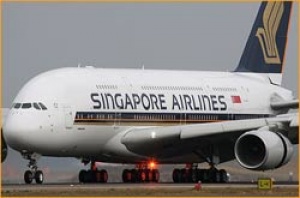CAAS and Singapore Airlines partner for world’s first multi-sector Green Flight

The Civil Aviation Authority of Singapore (CAAS) will be joining the Asia and Pacific Initiative to Reduce Emissions (ASPIRE) partnership, by signing the Joint Agreement on 1 February 2010.
The ASPIRE was initiated by the United States (US) Federal Aviation Administration (FAA), Airways New Zealand and Airservices Australia. The Japan Civil Aviation Bureau joined the ASPIRE when it signed the Joint Agreement in October 2009 in Osaka, Japan.
As a collaborative effort among Air Navigation Service Providers (ANSPs), the ASPIRE aims to accelerate the development of air traffic management procedures, with innovation, technology and harmonisation on key Asia and Pacific routes, that will reduce aviation emissions worldwide.
Mr Yap Ong Heng, Director-General, CAAS, said, “CAAS’ participation in ASPIRE demonstrates its commitment to adopting best practices in air navigation to play its part in addressing aviation emissions and the environment.”
World’s First Multi-Sector Demonstration Green Flight
ADVERTISEMENT
Under the ASPIRE, the partners work together with airlines on a series of demonstration green flights.
To mark its entry to the ASPIRE programme, CAAS is partnering Singapore Airlines (SIA) to conduct the world’s first multi-sector demonstration green flight.
SQ11, which operates from Los Angeles to Singapore via Tokyo, will be the fifth demonstration green flight under the ASPIRE programme and the first covering two sectors. Fellow ANSPs in the US and Japan will work together with CAAS and SIA to facilitate this flight end-to-end.
“Singapore Airlines is proud to participate by operating the first multi-sector demonstration green flight. The experience gained will not only set benchmarks in terms of best practices, but also help to encourage responsible environmental performance in the air transport industry,” said the airline’s Senior Executive Vice-President Operations and Planning, Bey Soo Khiang.
Mr Yap said, “This ASPIRE flight is a collaborative effort requiring a high level of cooperation among three Air Navigation Service Providers in the US, Japan and Singapore, and Singapore Airlines, to demonstrate that an aircraft flying on its most optimal route can achieve significant reductions in fuel consumption and carbon emissions.”
Aside from ensuring that the aircraft flies through optimum air traffic conditions, other measures will be implemented throughout all phases of the flight to reduce fuel burn.
Mr Bey explained, “Even though we have a very young and modern fleet, we continue to adopt best industry practices to further improve fuel efficiency and therefore reduce carbon emissions. This includes strict control on the aircraft weight, regular engine wash, and airframe wash and polish programmes. For this particular flight, on top of these regular measures, we will employ real-time updates of weather conditions to chart the most efficient routing for the aircraft instead of flying a predetermined route. And upon arrival, a continuous descent approach to the airport will be adopted if conditions permit.”
SQ11 is scheduled to depart Los Angeles International Airport on 31 January at 1310hrs and reach Tokyo Narita International Airport at 1755hrs the next day. The Boeing 747-400 aircraft will depart Tokyo that same day at 1900hrs and arrive in Singapore on 2 February at 0135hrs (all times local).
The best practices and initiatives in air traffic management and flight operation procedures employed for the flight, as well as actual fuel savings and reduction of carbon emissions achieved by the flight will be announced on 2 February 2010.

